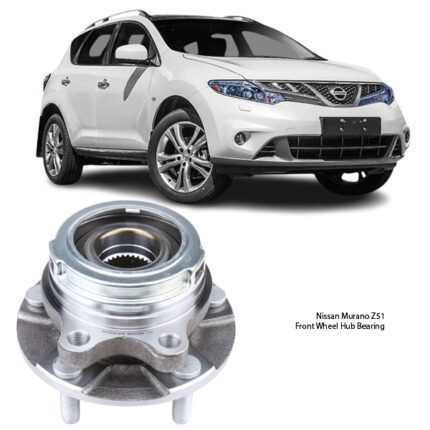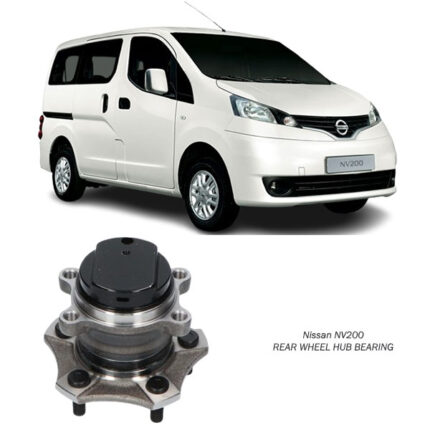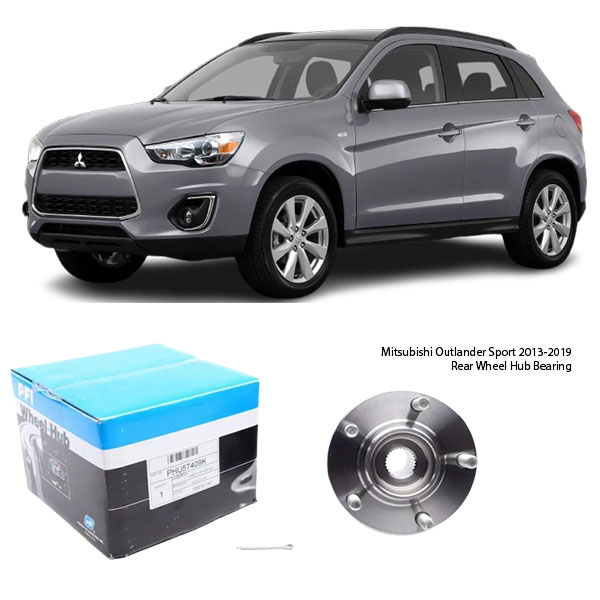-6%
Get Mitsubishi Outlander Sport 2013-2019 Rear Wheel Hub Bearing PHU3785A063 in Kenya
Hidden behind your wheels, doing its job in complete silence, is a small yet powerful component called the Rear Wheel Hub Bearing. It might not have the glamour of a high-performance engine or the thrill of a roaring exhaust, but without it, your vehicle simply wouldn’t roll — literally.
From smooth highway glides to tight turns on city streets, the rear wheel hub bearing is essential for safety, handling, and ride comfort. Let’s explore this vital part and why it deserves more appreciation than it gets.
🚗 What is a Rear Wheel Hub Bearing?
The rear wheel hub bearing is a part of the wheel hub assembly that allows your wheels to rotate with minimal resistance, supporting the weight of the vehicle and keeping everything aligned and spinning smoothly.
It’s made up of high-precision steel balls or rollers enclosed in a durable metal ring known as a race. Together, these elements reduce friction and enable smooth wheel rotation.
In most modern setups, the rear hub bearing comes as a sealed unit that includes:
-
🧲 An integrated ABS sensor
-
🔧 The bearing itself
-
🔩 A wheel flange for mounting
This integration reduces the number of separate parts and improves reliability.
🌀 Why It Matters
Your rear wheels don’t just follow the front — they stabilize, support, and balance your entire vehicle. The rear hub bearing plays a crucial role in this by:
-
⚖️ Carrying weight – Supporting passengers, cargo, and suspension loads.
-
🔁 Allowing wheel rotation – With minimal resistance and noise.
-
📏 Maintaining wheel alignment – Preventing tire wobble or misalignment.
-
🚨 Feeding ABS signals – Communicating wheel speed to safety systems.
If this one part fails, everything from tire life to braking performance is affected.
🛠️ How It Works
At its core, a hub bearing acts like a buffer between the wheel and the axle. Inside, steel balls roll between two metal rings, lubricated with high-grade grease and protected by rubber seals.
When the wheel spins, the inner race rotates while the outer race stays fixed to the suspension — or vice versa. The rolling action reduces friction and supports lateral (side-to-side) and radial (vertical) forces acting on the wheel.
High-quality hub bearings are engineered for precision, often within microns. Any variation in balance or alignment can disrupt the entire system.
🔎 Signs of a Failing Rear Wheel Hub Bearing
While these components are built to last, they don’t last forever. Recognizing the symptoms of a failing rear hub bearing early can prevent expensive repairs or even dangerous driving situations.
Look out for:
-
🔊 Humming or growling noises coming from the rear wheels
-
🚧 Vibrations or wobbling felt while driving
-
🛞 Uneven or rapid tire wear
-
🧍♂️ Loose-feeling rear end during cornering
-
🚨 ABS warning lights due to failed speed sensors
-
🔩 Play or movement in the rear wheel when jacked up
These issues usually worsen with speed and may seem subtle at first — but they get worse over time.
🧪 What Causes Wear and Tear?
Even the strongest bearings will degrade with time, but several factors can accelerate wear:
-
🌧️ Water and moisture intrusion – causes rust and breaks down lubrication.
-
🛣️ Driving on rough or unpaved roads – increases shock and vibration.
-
📦 Overloading – exceeds the bearing’s designed weight limits.
-
🧱 Improper installation – misalignment or over-torquing can damage the races.
-
🧂 Salt and debris – especially in coastal or snowy regions, can erode seals.
Routine checks and a smooth driving style can prolong bearing life significantly.
🧰 How It’s Replaced
Rear wheel hub bearing replacement is a technical procedure best handled by a skilled technician. Here’s a simplified step-by-step:
-
🏗️ Vehicle is lifted and rear wheel removed
-
🔩 Brake caliper, rotor, and hub nuts are detached
-
🧲 ABS connector is unplugged (if applicable)
-
🛠️ Old bearing assembly is unbolted and removed
-
🧼 Mounting surface is cleaned
-
🆕 New hub bearing assembly is installed and torqued to spec
-
🧪 Final inspection and test drive
Because it’s a sealed unit, you can’t “repair” a rear wheel hub bearing. It must be replaced as a whole.
⏳ How Long Does It Last?
Rear hub bearings typically last 80,000–150,000 kilometers depending on:
-
Driving style
-
Road conditions
-
Vehicle weight
-
Weather exposure
Some may last much longer with good maintenance. Others fail early under harsh conditions. That’s why regular inspections during routine service are a smart preventive measure.
🛑 Risks of Ignoring a Worn Bearing
If a worn rear wheel hub bearing is ignored, it can escalate into severe mechanical problems or even accidents. Here’s what could go wrong:
-
🔧 Wheel could come loose or detach
-
🛞 Tires may wear unevenly and need early replacement
-
🚨 ABS system could malfunction
-
🧭 Steering becomes unpredictable, especially at high speeds
-
⛽ Fuel efficiency may drop due to excess drag
In short: it’s not worth the risk. Early action is always safer and more affordable.
📋 Inspection Tips
Want to check your rear hub bearings at home? Here are some quick tips:
-
🛞 With the car safely lifted, grab the tire at the 12 and 6 o’clock positions and try to rock it. Excessive play = bad bearing.
-
🔁 Spin the wheel and listen for grinding or rough sounds.
-
🚘 During a drive, listen for droning noises that change when turning.
Still unsure? Let a technician inspect it with professional tools and trained eyes.
🧠 Smart Maintenance Practices
Extend bearing life with a few good habits:
-
✅ Service your suspension regularly
-
⛽ Avoid overloading your vehicle
-
🚧 Slow down over bumps and potholes
-
🧽 Wash the undercarriage often — especially after off-road or salty roads
-
🔍 Get your wheel alignment and balance checked regularly
Even though hub bearings are low-maintenance, they still benefit from a caring owner.
🔚 Conclusion: Small Part, Big Responsibility
Though small in size, the Rear Wheel Hub Bearing carries the weight — literally and figuratively — of your vehicle’s stability, comfort, and safety. It’s the kind of part you never notice when it works perfectly, but absolutely feel when it doesn’t.
It’s not just about preventing noise or wear — it’s about keeping you in control. Whether you’re navigating tight corners or cruising the open road, the rear wheel hub bearing ensures that every rotation of your wheel is smooth, steady, and secure.
So next time you think about vehicle maintenance, remember: it’s the silent parts like this that make the biggest difference on the road.
Follow us on Facebook for more parts.



